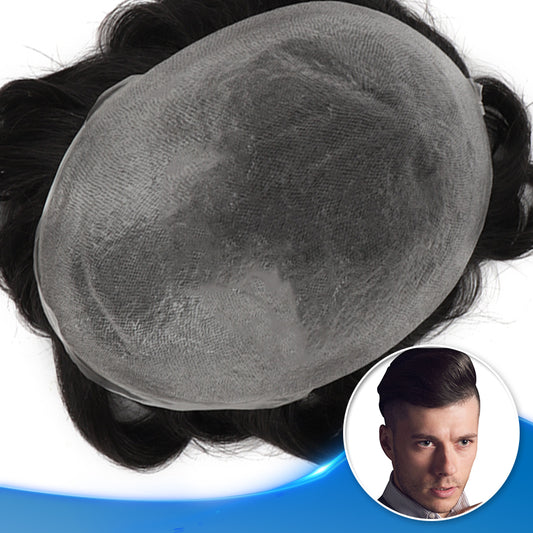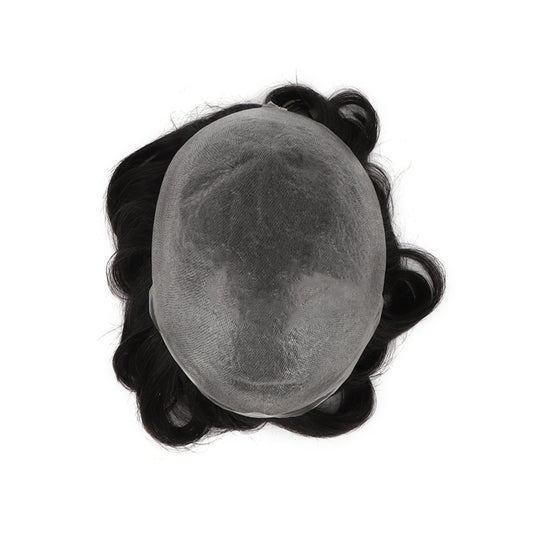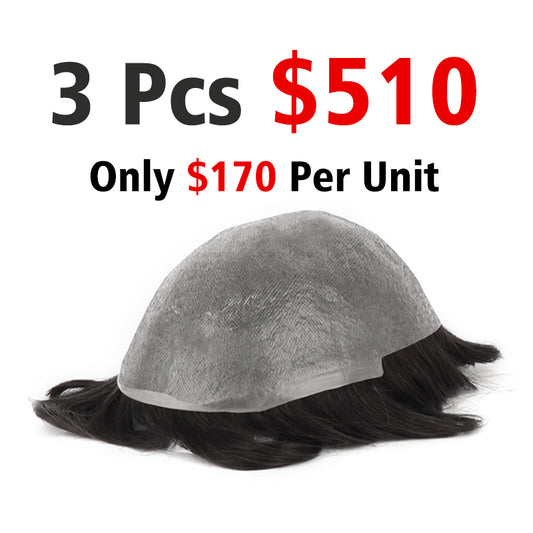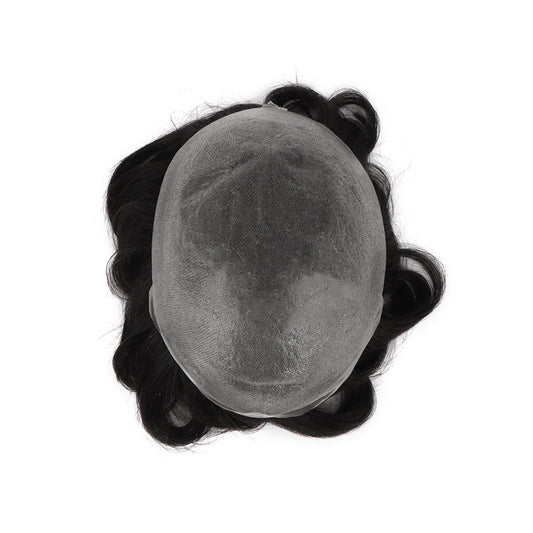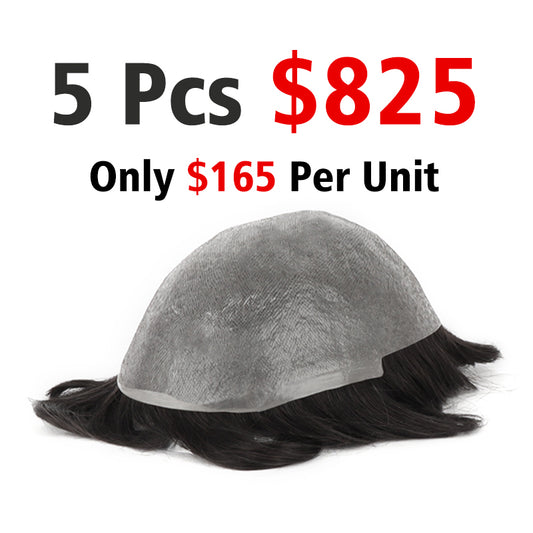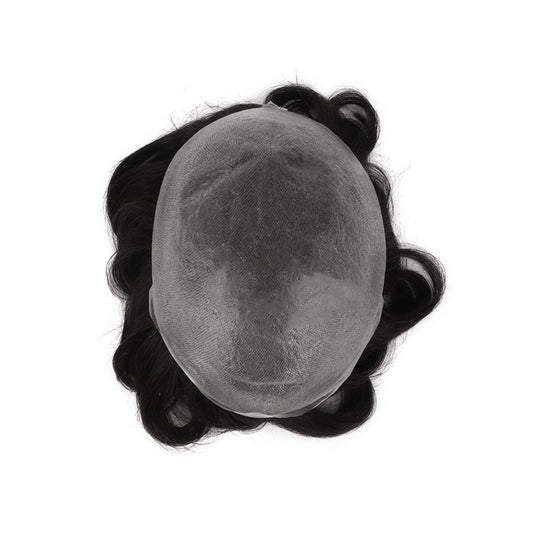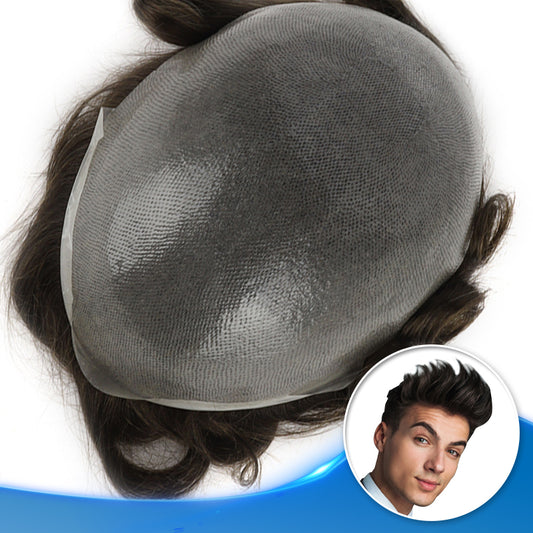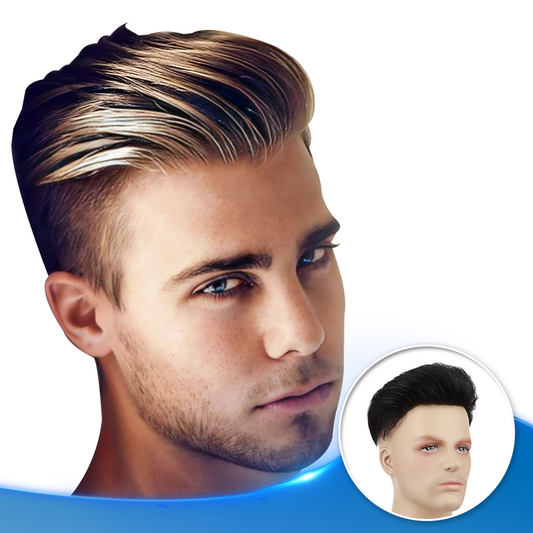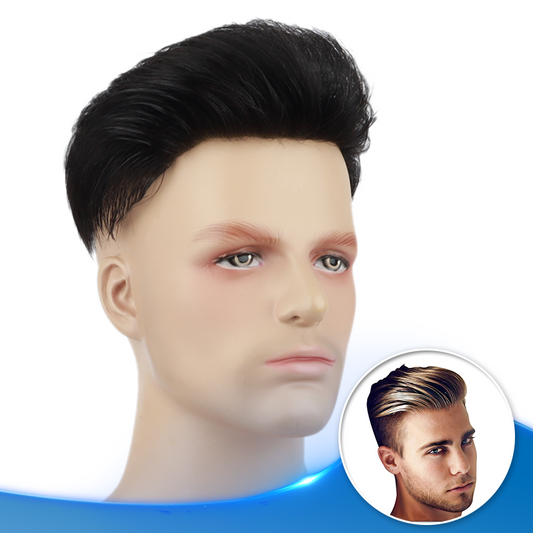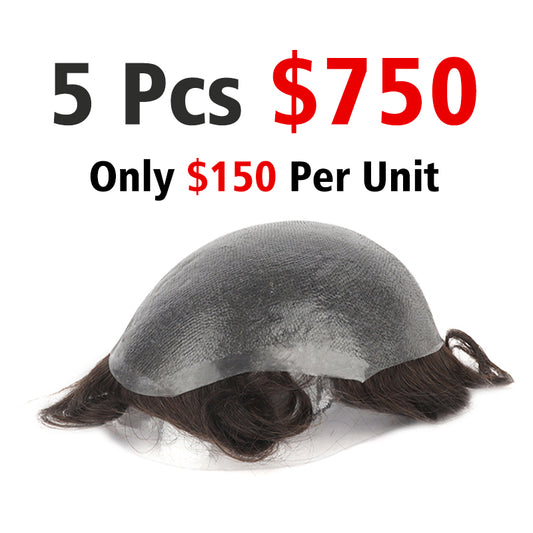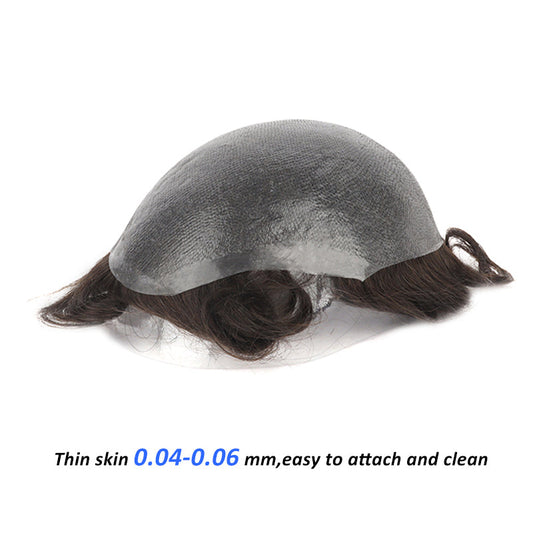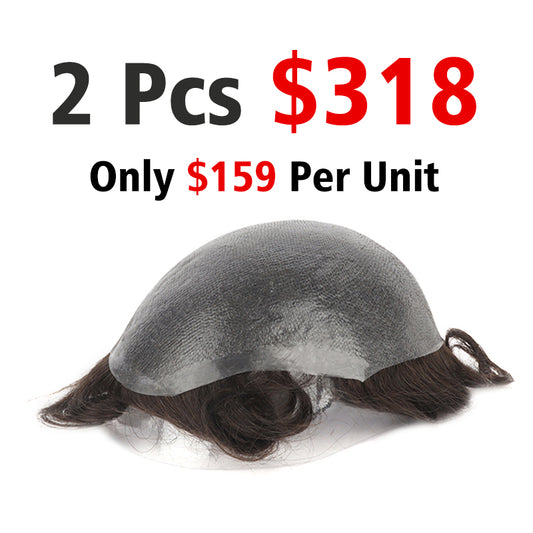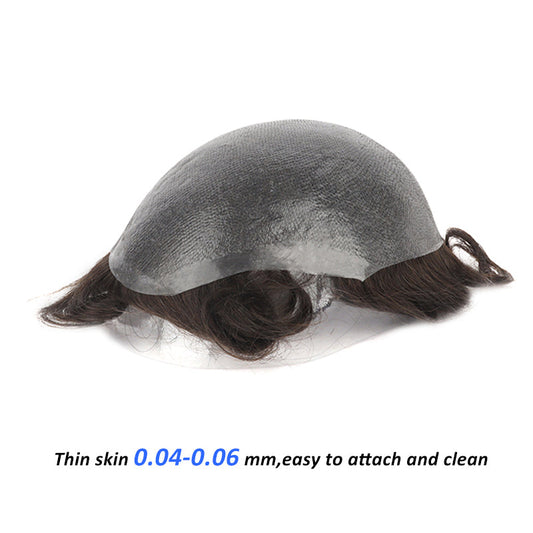Men's toupee
Sort by
What is the hair system?
The Hair System, also known as the Non-surgical hair Replacement
System, Toupee, or Hairpiece, is a modern hair loss solution that works by
providing full or partial coverage of the hair loss area. Even when swimming, chasing kids, exercising, or working in
demanding jobs, the hair system can help wearers get the full look of their
hair, just like each customer's real hair. As a result, they are becoming more and more popular in many
countries.
Unlike hair transplants, which carry associated risks such as
scarring, infection, and pain, there's no surgery, no recovery time, no medical
expenses -- just a good, natural look and the feel of your hair.
Affordable hair replacement systems are the least costly way to
hide hair loss, especially when compared to hair transplants. Almost everyone can buy them, even for a long time. With proper care and maintenance, they can last for years. On average, the average person probably spends less than $1,000
a year on hair pieces.
How much does the hair system cost?
·
The cost of hair systems varies widely due
to a number of factors. Typically, hair systems on the market today
retail for between $150 and $400.
·
The most important factors associated with
the cost of hair systems are as follows:
·
Hair type
·
Different types of hair with different
characteristics are used in the production of the hair system. The
most common human hair types are Indian hair, Indian remi hair, European hair
and Chinese hair. In contrast, synthetic hair is the most popular
type of artificial hair. Usually, more elaborate and scarce hair
types, such as Indian Remy and European hair, command higher
prices. Synthetic hair usually has the lowest value because it can be
produced easily and infinitely. Another reason is that synthetic
hair doesn't look as natural and realistic as human hair.
·
The length of the hair
·
When manufacturers of hair systems purchase
human hair materials for production, the longer the hair, the higher the
cost. That's because hair is originally collected from the donor's
head, and longer hair takes more time to grow back. As for
artificial hair, the production of long hair always requires more chemicals
than short hair; Therefore, whether real or synthetic, longer hair
is always more expensive.
·
Hair density
·
Hair density is a measure of the hair
volume of the hair system. The higher the density, the more hair
there is in the hair system. Hair density is usually divided into
different grades to meet the needs of different people of different hair
density and age. As with length, it makes perfect sense that higher
hair density systems are more expensive because they require more hair
material.
·
Supply and demand
·
Like most other products, the price of hair
systems is influenced by local supply and demand. Many wig vendors
raise the prices of their best-selling products to achieve higher profit
margins without hurting revenue, while items that do not sell well are often
sold to clear inventory. On the other hand, the price of the same
wig tends to be higher in more economically developed regions with more
purchasing power than in less developed regions.
·
Wholesale and Retail
·
Obviously, buying in bulk from a
manufacturer costs less than going to a local store and buying a small
amount. This rule applies to most markets, and the wholesale hair
systems market is no exception. Wigs, especially wholesale men's
hair systems, are much cheaper to buy directly from hair system manufacturers because
their operating costs are much lower than those of wig dealers, whose target
audience is the end user.
Is the hair system permanent?
·
Hair systems don't last forever because
they're not a permanent solution. The hair system should be trimmed
once a week and completely removed and reattached monthly.
·
Most men's hair systems last anywhere from
a month to a year, depending on the type of base material.



